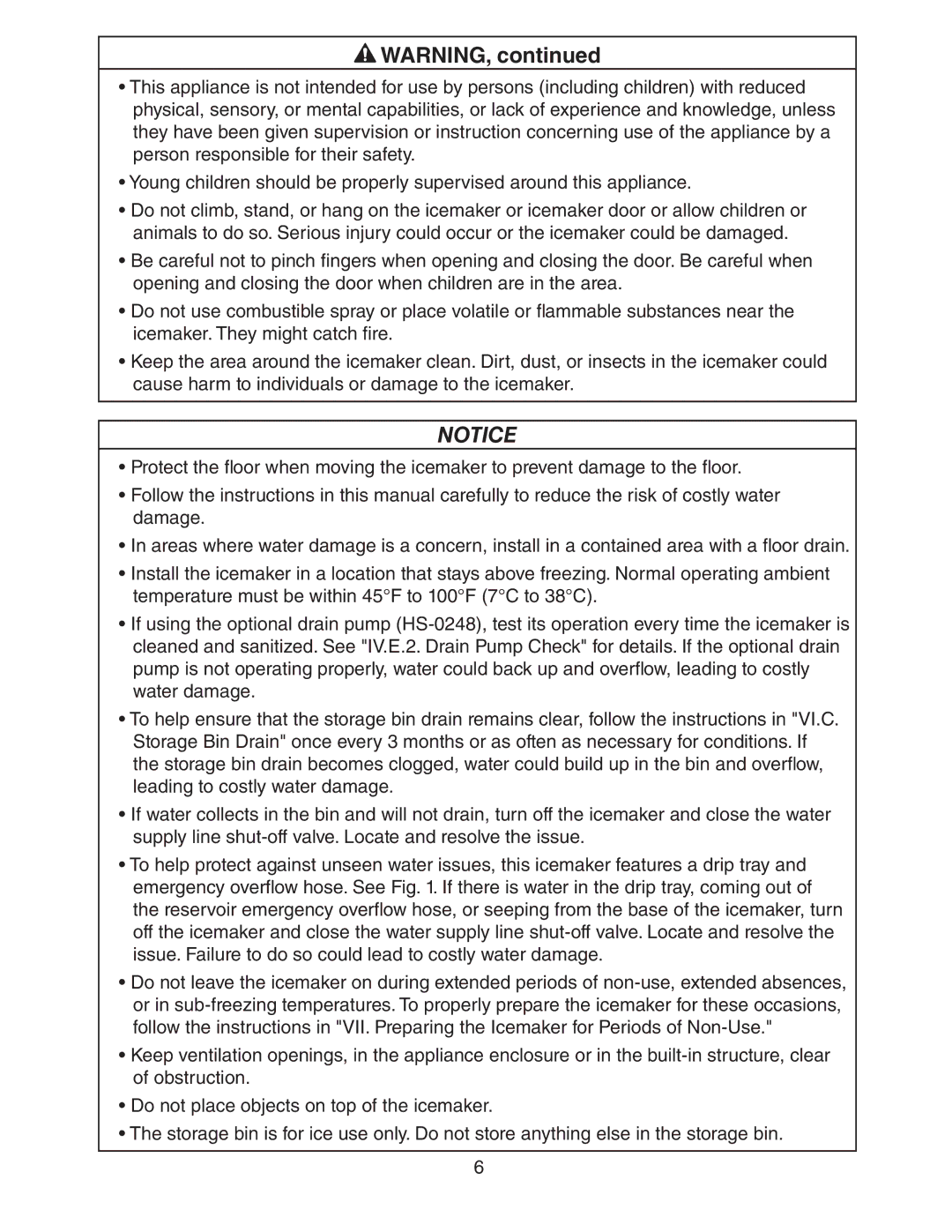
![]() WARNING, continued
WARNING, continued
•This appliance is not intended for use by persons (including children) with reduced physical, sensory, or mental capabilities, or lack of experience and knowledge, unless they have been given supervision or instruction concerning use of the appliance by a person responsible for their safety.
•Young children should be properly supervised around this appliance.
•Do not climb, stand, or hang on the icemaker or icemaker door or allow children or animals to do so. Serious injury could occur or the icemaker could be damaged.
•Be careful not to pinch fingers when opening and closing the door. Be careful when opening and closing the door when children are in the area.
•Do not use combustible spray or place volatile or flammable substances near the icemaker. They might catch fire.
•Keep the area around the icemaker clean. Dirt, dust, or insects in the icemaker could cause harm to individuals or damage to the icemaker.
NOTICE
•Protect the floor when moving the icemaker to prevent damage to the floor.
•Follow the instructions in this manual carefully to reduce the risk of costly water damage.
•In areas where water damage is a concern, install in a contained area with a floor drain.
•Install the icemaker in a location that stays above freezing. Normal operating ambient temperature must be within 45°F to 100°F (7°C to 38°C).
•If using the optional drain pump
•To help ensure that the storage bin drain remains clear, follow the instructions in "VI.C. Storage Bin Drain" once every 3 months or as often as necessary for conditions. If the storage bin drain becomes clogged, water could build up in the bin and overflow, leading to costly water damage.
•If water collects in the bin and will not drain, turn off the icemaker and close the water supply line
•To help protect against unseen water issues, this icemaker features a drip tray and emergency overflow hose. See Fig. 1. If there is water in the drip tray, coming out of the reservoir emergency overflow hose, or seeping from the base of the icemaker, turn off the icemaker and close the water supply line
•Do not leave the icemaker on during extended periods of
•Keep ventilation openings, in the appliance enclosure or in the
•Do not place objects on top of the icemaker.
•The storage bin is for ice use only. Do not store anything else in the storage bin.
6
